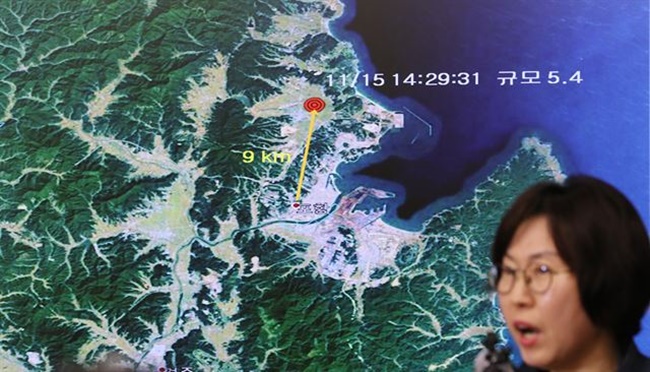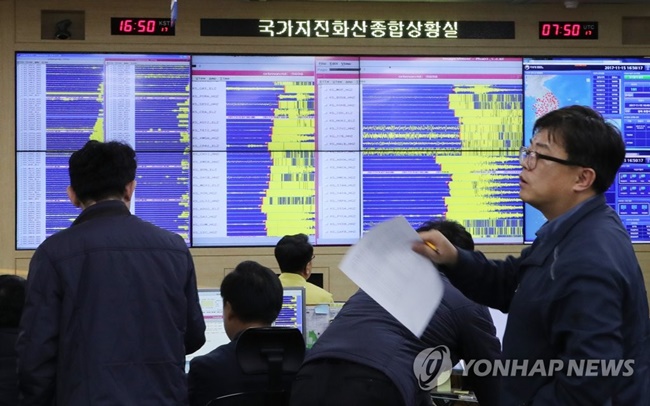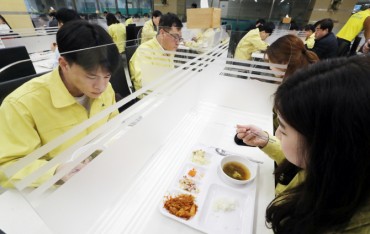
As over 5.0-magnitude earthquakes are often followed by a series of aftershocks of various intensities in the months that follow, more aftershocks are expected to hit Pohang, said Lee Mi-sun, the head of Korea Meteorological Administration (KMA)’s earthquake and volcano center. (Image: Yonhap)
SEOUL, Nov. 15 (Korea Bizwire) – Aftershocks are expected to continue in Pohang following the rare 5.4-magnitude earthquake that hit the region on Wednesday afternoon.
As over 5.0-magnitude earthquakes are often followed by a series of aftershocks of various intensities in the months that follow, more aftershocks are expected to hit Pohang, said Lee Mi-sun, the head of Korea Meteorological Administration (KMA)’s earthquake and volcano center.
According to the KMA, a 5.4-magnitude earthquake occurred in the northern part of Pohang in North Gyeongsang Province, the second strongest earthquake since records began at the KMA in 1978, following the 2016 Gyeongju earthquake that measured 5.8 on the Richter scale.
“As aftershocks from last year’s earthquake have been recorded as recent as last month, this earthquake in Pohang is expected to be followed by similar aftershocks,” Lee said.
Lee said the Pohang earthquake seem to have occurred along the Jansa Fault, which lies slightly above the Yangsang Fault that was responsible for the 2016 Gyeongju earthquake, and said the findings will be looked into further in time as authorities gather more information.
During a briefing held soon after the earthquake in Pohang on Wednesday, Lee spoke about claims in the academic world connecting the 2016 Gyeongju earthquake with the Great East Japan Earthquake.
“As many argued in the academic world that the 2016 Gyeongju earthquake was an aftershock of the Great East Japan Earthquake, we will also be looking into a possible link with the latest earthquake in Pohang,” Lee said.
The magnitude 5.4 earthquake struck the southeastern city of Pohang on Wednesday, causing damage to buildings, with tremors felt even hundreds of kilometers away in Seoul.
At least 14 people sustained minor injuries as of 7 p.m. on Wednesday, according to the National Fire Agency.
Following a series of aftershocks in the region, over 100 schools returned their students home early, according to the Gyeongsangnam-do Office of Education.

Aftershocks are expected to continue in Pohang following the rare 5.4-magnitude earthquake that hit the region on Wednesday afternoon. (Image: Yonhap)
With the College Scholastic Ability Test taking place tomorrow, most high-school students had returned home by the time the earthquake occurred, and no casualties have been reported at any schools in the area.
Hyunsu Yim (hyunsu@koreabizwire.com)






